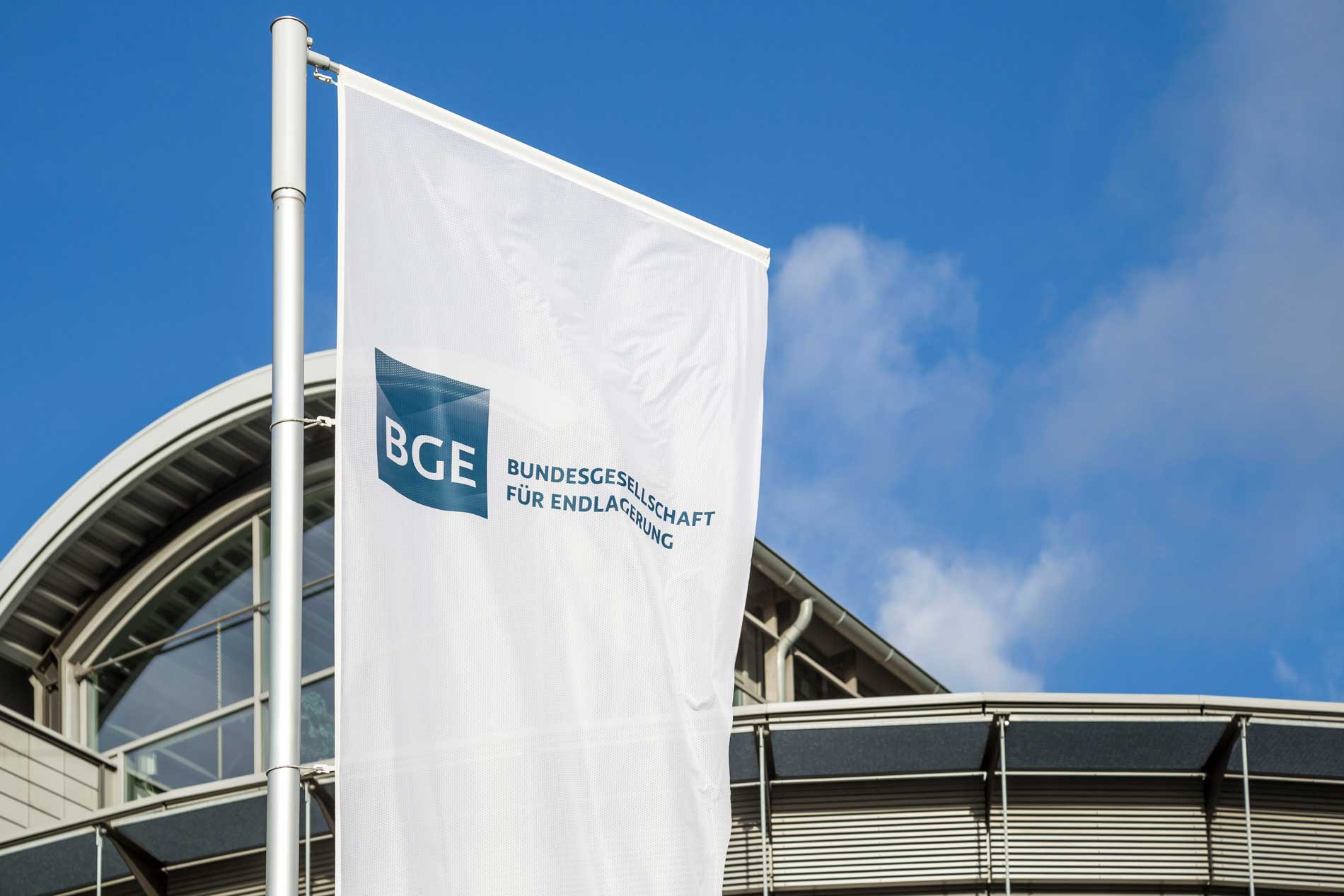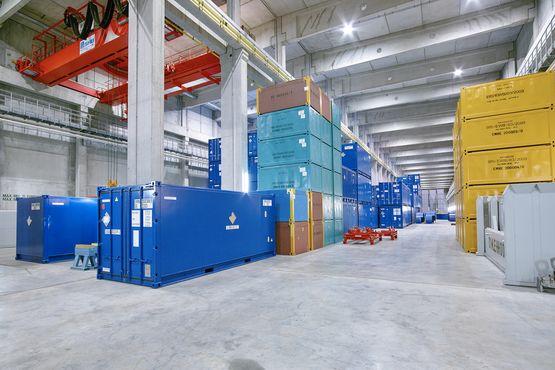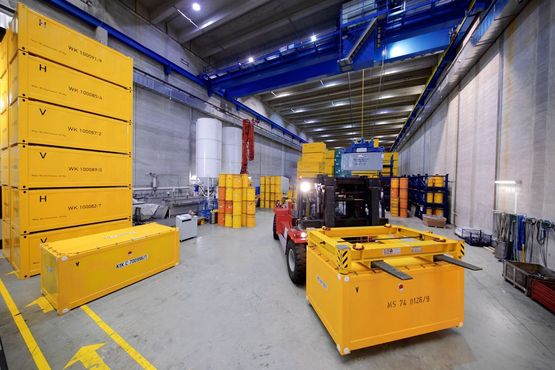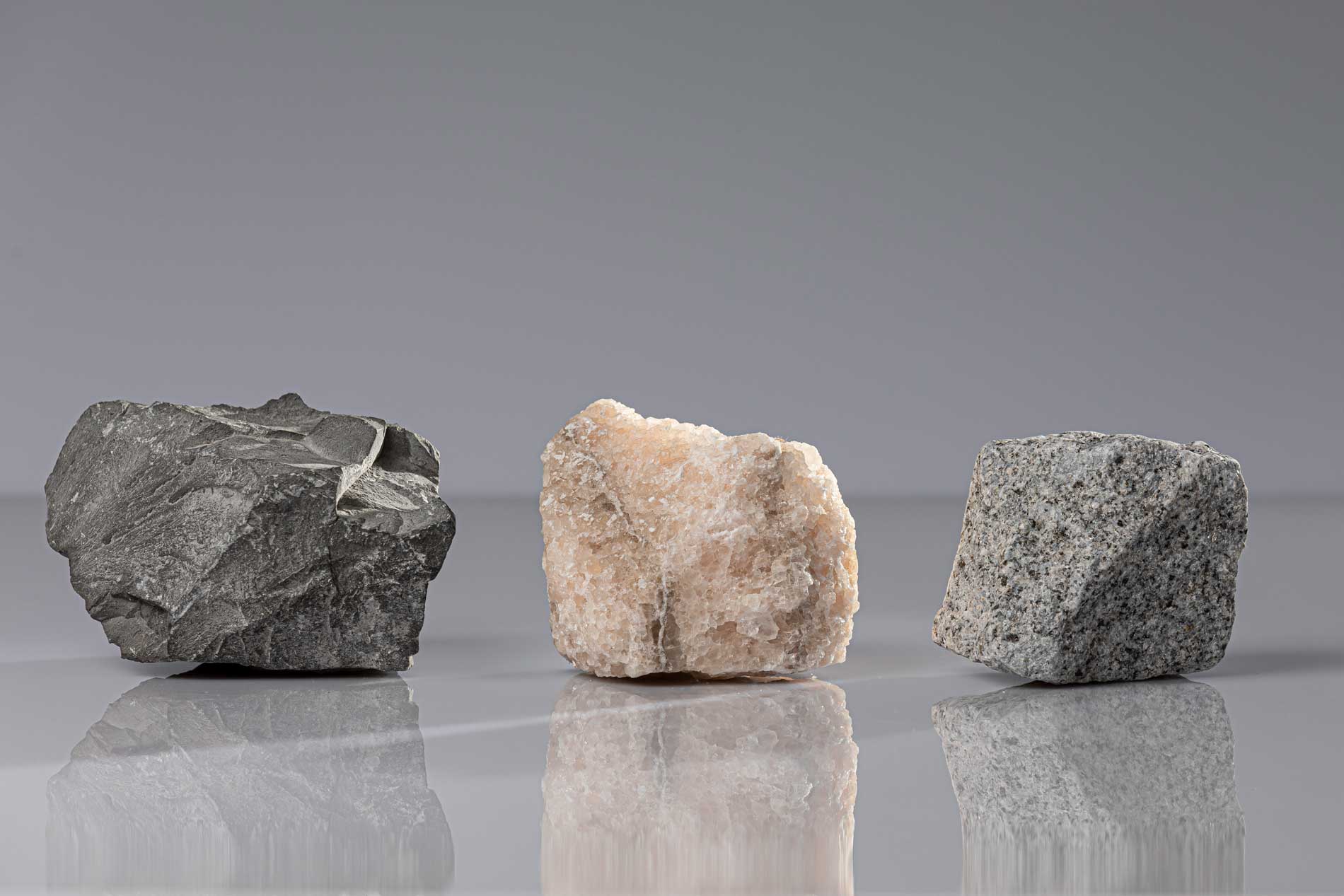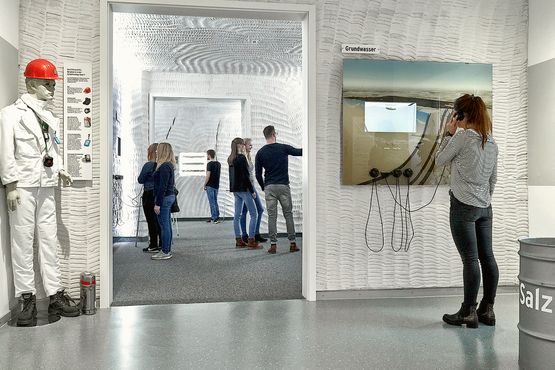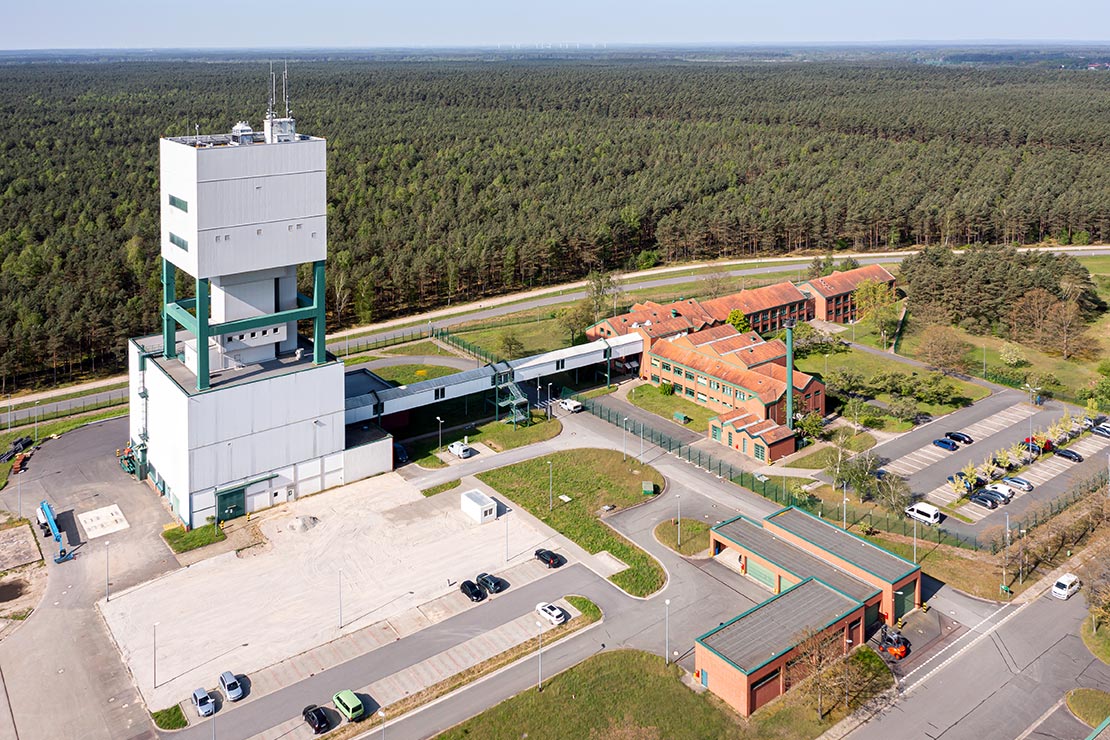Unwanted changes: stabilisation measures for decommissioning
What is the objective of the planned decommissioning of the Morsleben repository? It is imperative that the emplaced low- and intermediate-level radioactive waste remains separate from the biosphere – that is, the habitat of plants, animals and humans. As radioactive materials must be prevented from entering the environment, sealing structures are to be built and the shafts are to be sealed. To a large extent, the repository mine will also be backfilled with salt concrete. (See Decommissioning of the Morsleben repository.)
Why is costly backfilling of the mine necessary if there are sealing structures? Backfilling the mine will serve to stabilise the rock in the vicinity of the repository. This is important because the surrounding rock prevents the ingress of solutions, acting like a raincoat and performing an important protective function.
The mine is currently stable, as shown by extensive geomechanical monitoring. In some areas, however, it must be assumed that the protective function of the salt rock will not remain intact on a permanent basis if no action is taken. The reason for this is that the salt moves a few millimetres a year under the pressure exerted by the rock. Although this movement – known as convergence – is slight, it is detectable. In the long term, convergence results in local excavation-disturbed zones in the rock that harm the stability and impermeability of the salt barrier, and pathways can form that allow the transport of radioactive materials.
The decommissioned repository should provide long-term safety and be maintenance-free
Backfilled mine workings support the rock, and backfilling prevents the formation of further excavation-disturbed zones. Existing excavation-disturbed zones are healed by creeping movements of salt rock deposits. In the long term, a fully intact barrier forms again and encloses the emplaced waste.
It is not only the large mining chambers that are backfilled. Galleries and connections between the individual levels of the repository are also designated as underground excavations.
A high degree of backfilling limits dissolution processes
Another advantage of backfilling is that it limits dissolution processes within the decommissioned mine workings. Although calculations in the decommissioning plans show that it is unlikely that large quantities of solution or even groundwater will enter the decommissioned Morsleben repository, the possibility has not been ruled out.
These solutions could dissolve salt rock that they come into contact with. The more sections of the repository are backfilled, the less this process takes place – and the less the geometry of the mine workings changes. The likelihood of further influxes of solution decreases, and the rock remains stable in the long term. Moreover, damage at ground level due to subsidence, for example, is avoided.
What is to be backfilled?
The plan is to use salt concrete as the construction material for backfilling. Salt concrete is made up of cement as a binder; concrete additives such as mineral filler; other aggregates such as fine-grained salt rock and quartz sand; and mixing liquid – i.e. water and saline solution. The BGE has already backfilled 27 rock-salt mining chambers with around 935,000 cubic metres of salt concrete, thereby stabilising them, as part of the prevention of mining hazards in the central part. This process provided considerable experience in dealing with the construction material, and this experience is also to be applied to decommissioning.
During decommissioning operations, the salt concrete will be prepared off-site as a pumpable mixture. On the premises of the Bartensleben shaft, the concrete will be transferred to a salt conveyor system that transports it underground through pipelines that pass through the shaft. Once underground, the salt concrete will be pumped into the respective mine workings via backfilling boreholes. In the process, the liquid concrete will have to cover a distance of several kilometres. A total of three piping systems will be provided for this purpose. Current plans involve the pumping of some 4 million cubic metres of salt concrete. In addition to salt concrete as a construction material, the process will also use magnesia cement for the seals as well as smaller quantities of other construction materials.
How is backfilling to be carried out?
All of the planned backfilling measures aim to ensure the long-term safety of the Morsleben repository as effectively as possible. Taking account of possible changes in geology and stability, the individual measures must fulfil a number of different purposes. During decommissioning planning, these purposes were used to determine not only the material to be used but also the different degrees of backfilling. The degree of backfilling varies depending on the nature of the cavity and on the intended purpose of backfilling. The material stabilises and/or reduces the size of the cavity. Each of the underground excavations is assigned to a backfilling category.
The exceptions are the Marie and Bartensleben shafts, which constitute their own decommissioning measure in combination with the shaft closures and are completely backfilled with multiple coordinated materials – primarily gravel, bitumen and bentonite.
What backfilling categories are there?
Backfilling category I
This includes mine workings in which sealing structures are built. Over 30 seals will be constructed in galleries and connections between the levels of the Bartensleben and Marie mines.
Backfilling category II
This category encompasses all open areas of the repository mine that are to undergo geomechanical stabilisation. Category II areas will be backfilled as completely as possible in order to achieve the necessary supporting effect. This work is intended to preserve the rock’s integrity or to further improve it in the long term, and corresponds to the backfilling that was already carried out as part of the prevention of mining hazards in the central part.
Backfilling category III
This includes all mine workings that are not assigned to another category. The degree of backfilling for each rock salt excavation in this category is determined on an individual basis, taking account of optimisation aspects. On average, the galleries and connections between the levels belonging to backfilling category III will be backfilled to a degree of 65% of the relevant pit area.
Backfilling category IV
This category encompasses all potash deposits of the Bartensleben and Marie pits, including the associated galleries and connections to adjacent levels. Potash salt is slightly soluble, and the backfilling measures are intended to limit the dissolution of potash salt deposits and the precipitation of minerals from the resulting solution (reprecipitation) in the event of an influx of solution. In order to limit the volume available for solutions, all potash deposits are therefore to be backfilled as completely as possible. However, the spatial conditions will mean that this is not possible in all locations – and this fact is accounted for in the safety assessments.
Backfilling process
The sequence of operations for backfilling the mine workings is precisely specified from both logistical and mining perspectives. In principle, backfilling will be carried out from the bottom to the top and from the outer areas of the repository mine inwards, progressing towards the Bartensleben shaft. Work will not begin on a new level until the backfilling measures for the underlying level are completed. The backfilling of the Marie mine will begin at the same time as work on the Bartensleben mine. Here, too, backfilling will be carried out from the bottom to the top and from the outside inwards, progressing towards the Marie shaft. According to current plans, it will take around 15 years to complete the backfilling of the mine workings.
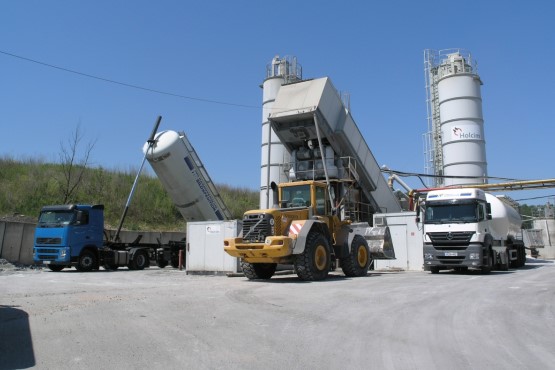
During the prevention of mining hazards in the central part, salt concrete was prepared at the mixing plant shown here




